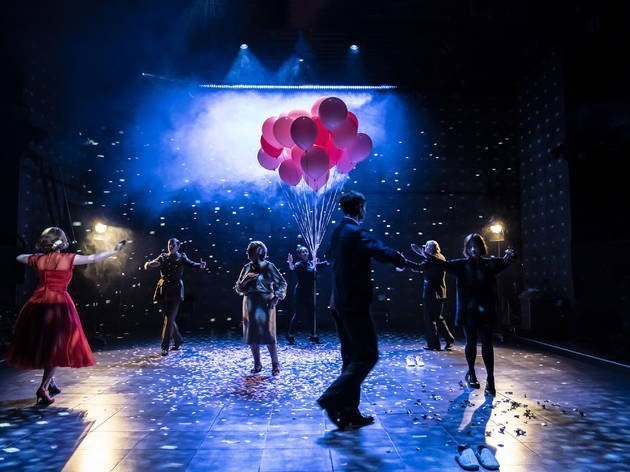Be careful what you wish for: it could be for eternity!
“Choose your memory. Only one memory. This is all there is. “
Guide
After Life by Jack Thorne adapted from Hirokazu Kore-Eda’s film is not to be confused with Afterlife a play by Michael Frayn, shown at the National in 2008, nor the television series After Life by Ricky Gervais. To add to the confusion, the 1998 Japanese film on which this production is based, was called Wonderful Life in Japan, and that is not to be confused with Frank Capra’s movie It’s A Wonderful Life, although we had heard two years ago that Paul McCartney was working on a musical adaptation of the Capra masterpiece.
Welcoming back the National Theatre after the latest lockdown is a real life theatre performance in the National’s smallest space the Dorfman. After Life is set in a kind of Purgatory without the punishment but with a deathtime limiting decision New arrivals, who have recently passed away have up to a week to decide on one memory from their life which is special. This moment will be recreated and recorded for them to stay in it for ever. Failure to reach a decision about a specific memory will result in spending eternity as a Guide with any other indecisive, newly or anciently departed.
On arrival in the socially distanced Dorfman we see a collection of shoes, all labelled and also, socially distanced, on the floor of the Pit. To the sides of Bunny Christie’s set are floor to ceiling grey filing cabinets with three, long library ladders to access the higher reaches of drawers.
After Life could be described as a memory play as, in the audience, I found myself thinking about which single memory I would choose as did my companion. June Walters plays the recently departed elderly Beatrice whose main concern is for her cat and who is unable to concentrate on the guide’s agenda. One of the guides suggests that if her body is not discovered, the tabby cat will be ok because it would eat her. I don’t know if this story is Estate Agents’ urban myth or if cats really do turn cannibalistic.
Beatrice is eventually coaxed by Guide Two (Luke Thallon) into relating a memory from her youth, when in a red dress she danced with her brother in uniform. There are those that cannot choose and one who refuses to choose as well as a girl who changes her choice repeatedly.
Jeremy Herrin directs for Headlong. There are points to be made along the lines of “Whose truth is it?” when people collide in this waiting room, who had met in life and whose memories diverge. Maybe memory plays tricks on your mind?
If the two fundamental belief systems of Japan are Shinto and Buddhism then After Life is in conflict with Buddhist re-incarnatory beliefs but the premise of After Life could work with Shinto’s search for purity and the idea that death itself is impure.
I suspect that devotees of Japanese culture and film will get more out of this play than I did.
Production Notes
After Life
Written by Jack Thorne
Adapted from the film by Hirokazu Kore-Eda
Concept by Bunny Christie, Jeremy Herrin and Jack Thorne
Directed by Jeremy Herrin
Cast
Starring:
Guides
Danielle Henry
Luke Thallon
Simon Startin
Millicent Wong
Kevin McMonagle
Guided
Olatunji Ayofe
Nino Furuhata
Maddie Holliday
Togo Igawa
Anoushka Lucas
Jack James Ryan
June Watson
Creatives
Director: Jeremy Herrin
Designer: Bunny Christie
Lighting Designer: Neil Austin
Sound Designer: Tom Gibbons
Movement Director: Shelley Maxwell
Video Associate: Mikaela Liakata
Music: Orlando Weeks
Production and Additional Composition: Sam Hudson Scott
Video Designer: Max Spielbichler
By special arrangement with Buena Vista Theatrical
Information
Running Time: One hour 40 minutes without an interval
Booking to 7th August 2021
Address:
Dorfman Theatre
National Theatre
South Bank
London SE1 9PX
Phone: 020 7452 3000
Website: www.nationaltheatre.org.uk
Rail/Tube: Waterloo
Reviewed by Lizzie Loveridge at the Dorfman
at a preview performance
on 7th June 2021


